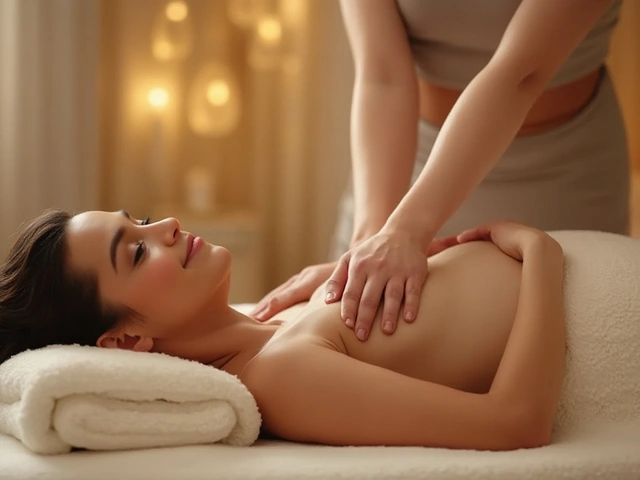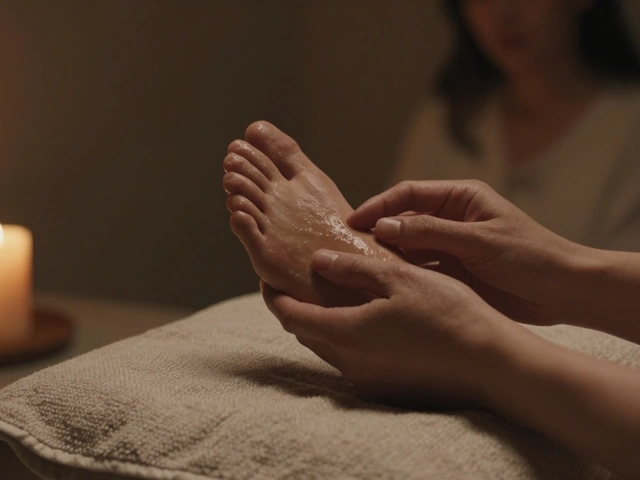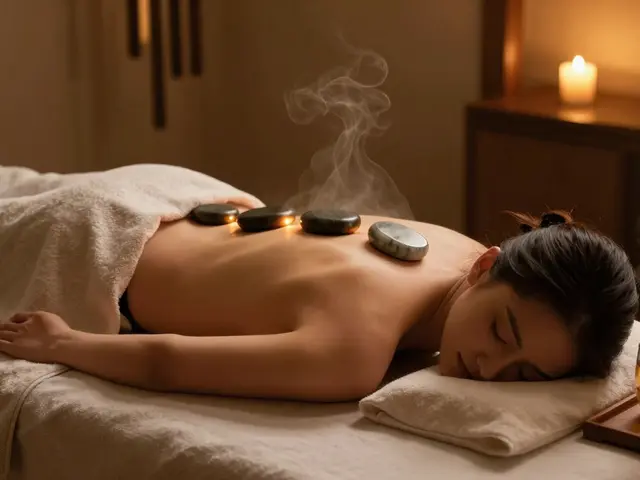Introduction to Craniosacral Therapy: A Healing Touch
In a world where the cacophony of conventional medicine often drowns out the whispers of alternative healing, craniosacral therapy (CST) stands as a beacon of gentle, yet profound, therapeutic intervention. Originating from the work of osteopathic physician William Garner Sutherland in the early 20th century, CST has evolved into a respected practice within the realm of bodywork and alternative therapy. It operates on the premise that the body is interconnected and that the health of the craniosacral system - encompassing the skull, spine, and sacrum, along with the cerebrospinal fluid that bathes them - is crucial for the overall health and wellness of the individual.
This therapy's core resides in the subtle manipulation of this system, aiming to release restrictions and restore balance. Practitioners, with featherlight touch, engage with the rhythms and flows of the craniosacral system, tuning into the body's subtle messages and nudges toward equilibrium. In doing so, it's not just the physical form that is nurtured but also the emotional and psychological dimensions, rendering CST a holistic modality that reverberates well beyond the therapy room.
Understanding the Mechanisms: Beyond the Surface
Peeling back the layers to understand how CST works delivers us into a fascinating confluence of anatomy, physiology, and energetic principles. At its most basic, CST is rooted in the natural movements of the craniosacral system - the production and absorption of cerebrospinal fluid within the dural membranes that encase the brain and spinal cord. This fluid's rhythmical ebb and flow are foundational to the body's health, influencing not just the central nervous system but also extending its effects to the musculoskeletal, endocrine, and cardiovascular systems.
When practitioners lay their hands on a person, they're not just feeling for physical irregularities but are attuned to the subtle pulsations and rhythms that indicate the craniosacral system's condition. By identifying areas where these rhythms are out of sync or restricted, they can apply gentle techniques to encourage the body's self-correcting mechanisms. This isn't about imposing change from the outside but rather facilitating the body's own capacities for repair and balance. It's a dance of intuition, science, and intention, where each session is uniquely tailored to the individual's needs.
Benefits That Span Body and Mind
The beauty of CST lies in its versatility and the breadth of conditions it can address, from the physical to the psychological. Its gentle nature makes it suitable for all ages, from newborns to the elderly, and for a wide spectrum of ailments. Chronic pain, migraines, neck and back issues, stress-related disorders, and even psychological conditions like depression and anxiety may find relief within the craniosacral realm. Its non-invasive approach is particularly appealing for those seeking alternatives to medication or more aggressive therapies.
What makes CST stand out is how it goes beyond mere symptom relief. By engaging with the body's underlying patterns and rhythms, it often illuminates root causes that other modalities might overlook. This can lead to more sustainable and holistic outcomes, offering not just temporary respite but pathways to deeper, longer-lasting healing. Moreover, the therapy's focus on creating a safe, supportive environment encourages a profound relaxation and letting go, allowing the body and mind to revive and rejuvenate.
Personal Stories of Transformation
Hearing the lived experiences of those who've walked the craniosacral path paints a vivid picture of its potential. Stories abound of individuals who, after years of chronic pain or emotional turbulence, found solace and healing in the subtle touches of CST. These narratives often share common themes: a sense of being deeply heard and understood, both by the practitioner and their own bodies; dramatic shifts in conditions that once seemed immovable; and the blossoming of a new relationship with their health and well-being.
Each story is a testament to the body's remarkable capacity for healing when given the right support. They remind us that sometimes the most powerful interventions come not from forceful manipulation but from quiet, attuned presence and the gentle encouragement of natural processes.
Integrating CST Into Your Wellness Routine
Incorporating craniosacral therapy into your wellness journey offers a unique complement to more conventional health practices. Whether you're grappling with specific health challenges or simply seeking a deeper sense of balance and vitality, CST provides a versatile tool for self-discovery and healing. It invites a slowing down, a turning inward, and a listening to the subtle whispers of the body that often go unnoticed in our fast-paced world.
Beginning this journey involves finding a qualified practitioner who resonates with your needs and goals. Look for someone with reputable training and credentials, but also trust your intuition about the fit between their approach and your own healing path. Engaging with CST is a collaborative process, one that thrives on open communication and a shared commitment to your well-being.
Preparing for Your First Session
Approaching your first craniosacral therapy session with openness and curiosity sets the stage for a rewarding experience. While each session is unique, they typically involve a mix of hands-on work and gentle conversation, with the practitioner guiding the process while attuning to your body's responses. There's no need for special preparation, but coming with an open heart and a willingness to engage with your inner landscape can enhance the experience.
During the session, it's common to experience a range of sensations, from subtle pulsations and waves of warmth to deeper emotional releases. These are all signs of the body's healing processes activating and should be welcomed as part of your journey toward wellness.
Navigating the Healing Journey
Healing, especially when delving into layers of physical or emotional distress, is not always linear. Embracing craniosacral therapy as part of your wellness toolkit means being open to the ebbs and flows of the healing process. Some may experience immediate relief or profound insights, while for others, the benefits unfold more subtly over time. Patience and persistence, paired with a nurturing relationship with your practitioner, can pave the way for transformative healing.
It's also crucial to view CST as one component of a holistic approach to health. Integrating its insights and benefits with other healthy practices, from nutrition and exercise to mindfulness and self-care, can amplify its effects and support a more rounded journey to wellness.
Looking Forward: The Future of Craniosacral Therapy
As more people seek out personalized, gentle, and holistic approaches to health, the future of craniosacral therapy shines brightly. With ongoing research into its mechanisms and benefits, coupled with a growing community of practitioners and recipients, CST is poised to play a significant role in the evolving landscape of health and wellness. It stands as a testament to the power of touch, the wisdom of the body, and our innate capacity for healing and balance.
In this age of rediscovery, craniosacral therapy offers a gentle nudge back to our natural state of wellness, inviting us to redefine health in more holistic, inclusive terms. It's a journey back to the essence of who we are, tenderly guided by the hands of those who believe in the body's profound ability to heal itself.










